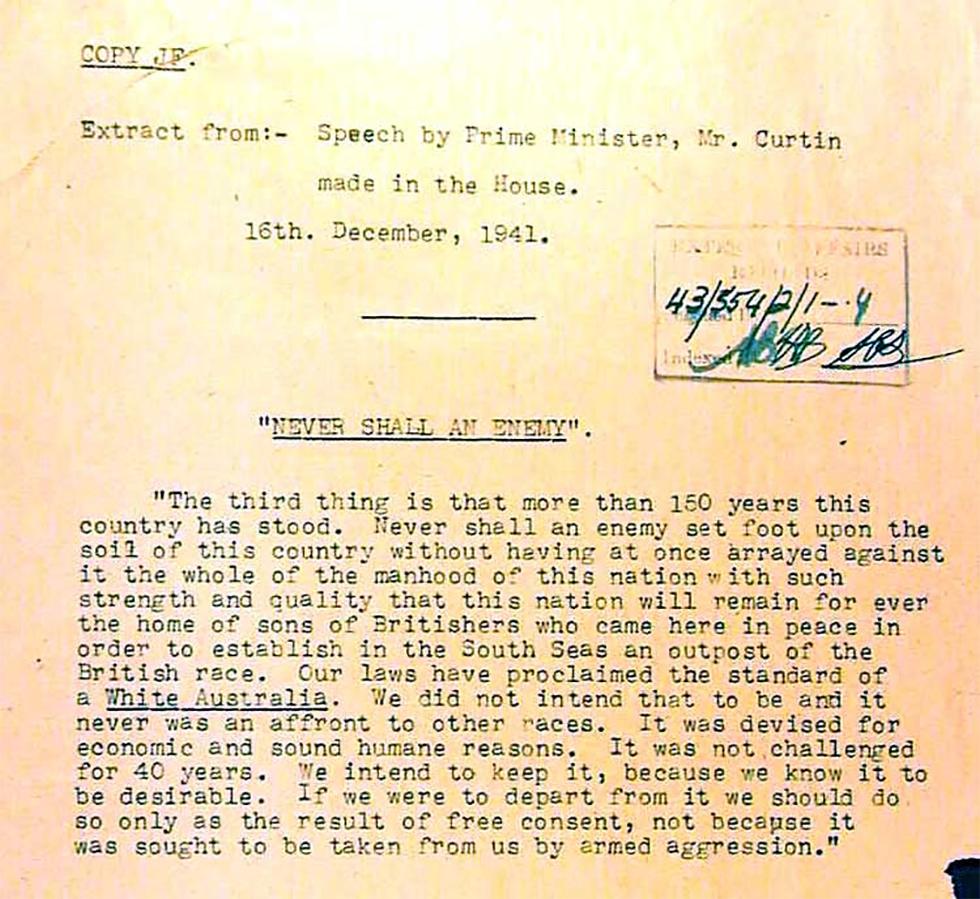
Extract of speech by Prime Minister John Curtin to the House of Representatives
Aboriginal and Torres Strait Islander people should be aware that the National Archives' website and collection contain the names, images and voices of people who have died.
Some records include terms and views that are not appropriate today. They reflect the period in which they were created and are not the views of the National Archives.


Extract of speech by Prime Minister John Curtin to the House of Representatives
[Underlined:] COPY JF.
[Heading:] Extract from:- Speech by Prime Minister, Mr. Curtin made in the House.
16th. December, 1941.
[Illegible stamp in black ink, with handwritten reference number '43/554/2/1-4' and handwritten signature in blue ink.]
[dividing line]
[Underlined heading:] "NEVER SHALL AN ENEMY".
"The third thing is that more than 150 years this country has stood. Never shall an enemy set foot upon the soil of this country without having at once arrayed against it the whole of the manhood of this nation with such strength and quality that this nation will remain for ever the home of sons of Britishers who came here in peace in order to establish in the South Seas an outpost of the British race. Our laws have proclaimed the standard of a White Australia [underlined]. We did not intend that to be and it never was an affront to other races. It was devised for economic and sound humane reasons. It was not challenged for 40 years. We intend to keep it, because we know it to be desirable. If we were to depart from it we should do so only as the result of free consent, not because it was sought to be taken from us by armed aggression."
This is a typed extract from the transcript of a speech by Australian Prime Minister John Curtin to the House of Representatives on 16 December 1941, in which he declares that Australia will resist any Japanese invasion. Curtin states that Australia had been established for more than 150 years by British people with 'White Australia' (underlined in the extract) as its standard. Curtin says that the White Australia standard will be kept and that any departure from it will be made by the free consent of Australians, not forced on them by foreign aggression.
Learning resource text © Education Services Australia Limited and the National Archives of Australia 2010.
Learn how to interpret primary sources, use our collection and more.
